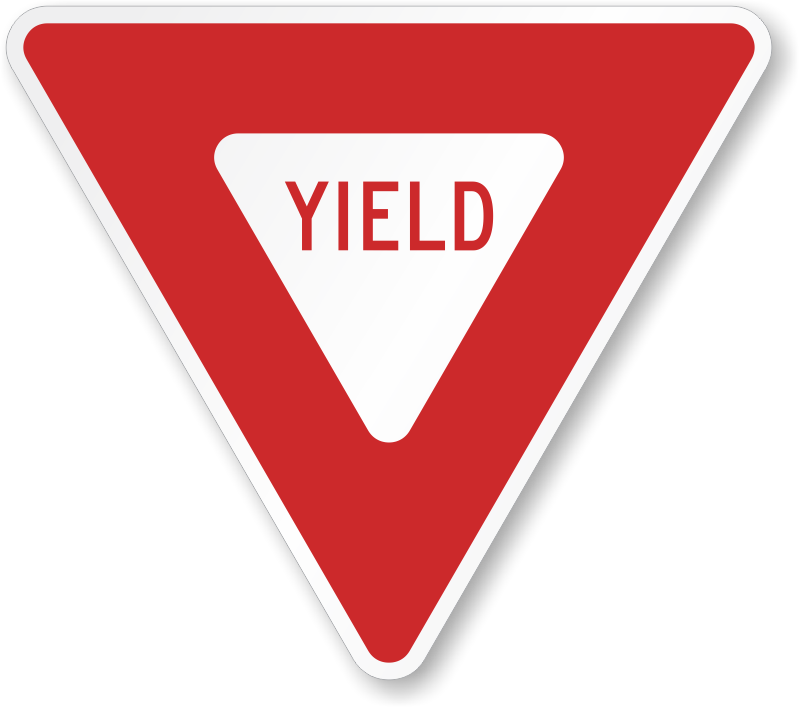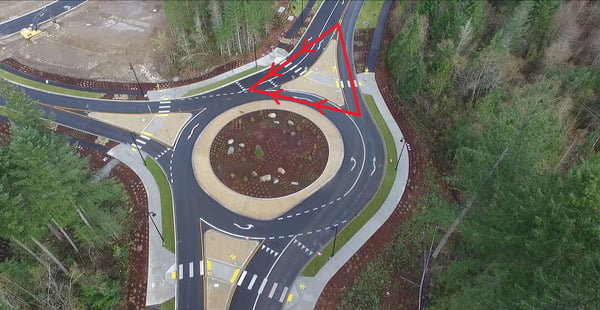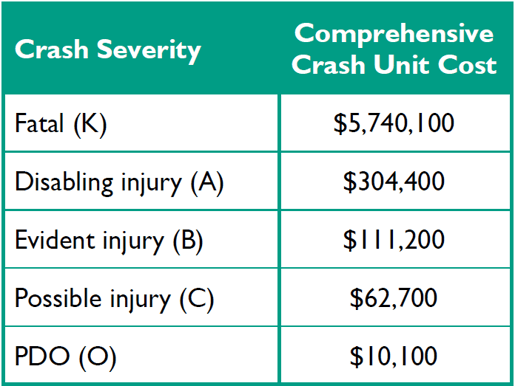Two of the biggest benefits of roundabouts over traditional intersections are 1) reduced delay to traffic, and 2) improved safety through less severe crashes. And while the shape we most often associate with roundabouts is the circle, these two benefits can be attributed to another shape...the triangle.
Triangle 1: The Yield Sign

The benefit of reduced delay comes from a symbolic triangle: the triangularly shaped yield signs that control roundabouts. We’ve all pulled up to a stoplight with no one coming from other directions and still had to stop and wait (seemingly forever) for the light to change in our favor. And we’ve pulled up to an intersection where clearly no one is coming from other directions and still you are required to come to a complete stop before you can proceed.
The yield control for roundabouts eliminates these situations and allows drivers to enter the intersection without stopping when it is safe to do so. This cuts down on stopping, starting and waiting that is inherent to stop or signal controlled intersections. While yield controlled intersections do require the driver to make more judgments, these intersections are utilized in a more optimal way, cutting down on the time when people are stopped or waiting even though the intersection is clear.
Triangle 2: The Deflection Angle
The second benefit of less severe crashes comes from the triangle formed by the angled approach to a roundabout. In the technical parlance this is called the deflection angle. The one way circulating path of the roundabout means that entering traffic is joining the circulating traffic in the same direction of travel. The angle between the circulating traffic and the entering traffic forms our second triangle and is the reason crashes are usually less severe.

Project Designed by MacKay Sposito - Cascadia Blvd - Forest Park Drive in Pierce County, WA
Traditional intersections run the risk of head on or T-bone crashes. These crashes are higher energy and often lead to injuries or fatalities. The acute deflection angle means that when crashes occur they are between vehicles heading mostly in the same direction and are likely to cause only vehicular damage. While no crashes would be ideal, reducing crash severity provides a significant benefit. The table below from the Federal Highway Administration Office of Safety shows the dramatic impact reducing the severity of a crash can have. A Possible Injury crash is more than 6 times as expensive as a Property Damage Only (PDO) crash.
Crash Costs by Injury Severity Level

Source: Federal Highway Administration Office of Safety (2018). Crash Costs for Highway Safety Analysis.
The decrease in delay and crash severity are two of the biggest benefits of roundabouts and they are made possible by the yield control and the deflected entry. So while the roundabout gets its recognizable look from the circle, the key benefits it provides to the user are owed to the triangle.
What do you think about roundabouts? What is your favorite or least favorite feature? Please leave a comment and let me know.

